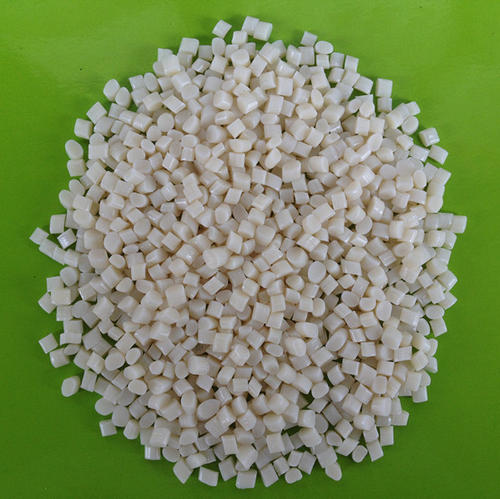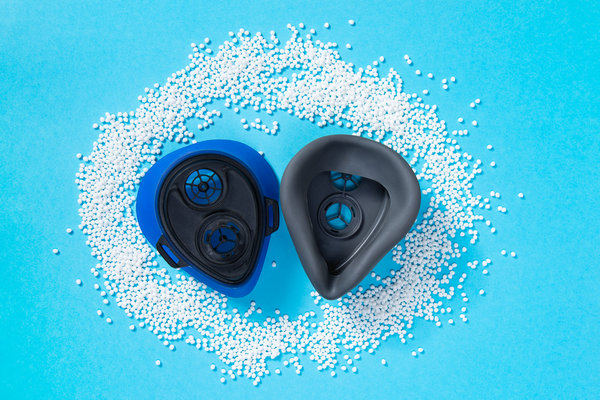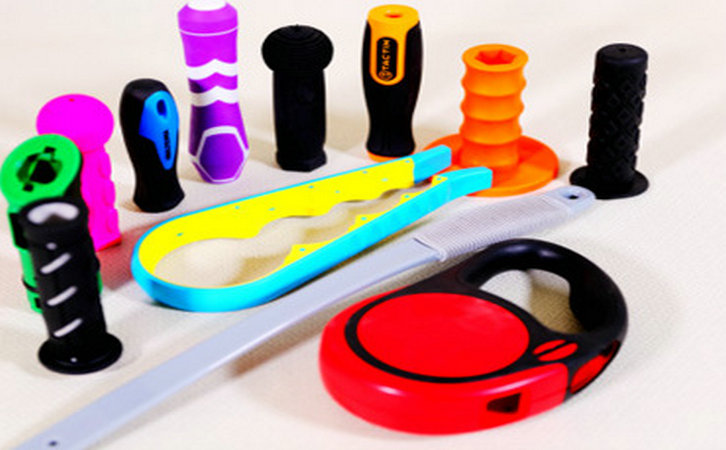As someone who’s spent years immersed in the world of material science and footwear manufacturing, I’ve seen firsthand how the right production process can make or break a product. TPR (Thermoplastic Rubber) shoe soles have become a go-to choice for manufacturers due to their balance of flexibility, durability, and cost-effectiveness. Whether you’re a factory manager looking to optimize production or a designer curious about how these soles come to life, understanding the TPR production process is key to achieving high-quality results. In this article, I’ll walk you through the entire process, from raw material selection to final quality checks, sharing practical insights and lessons learned from my time on the factory floor. My goal is to help you navigate the complexities of TPR sole production with confidence.

Why TPR for Shoe Soles?
Before diving into the production process, let’s clarify what makes TPR so special for shoe soles. TPR is a thermoplastic elastomer that combines the elasticity of rubber with the processability of plastic. It’s lightweight, slip-resistant, and offers excellent cushioning, making it ideal for everything from casual sneakers to work boots. However, producing TPR soles isn’t as straightforward as it seems. The material’s sensitivity to temperature, mixing precision, and molding conditions requires careful attention to detail. I’ve seen projects go awry due to small oversights, like improper compounding or rushed cooling, leading to soles that crack or deform. To avoid these pitfalls, let’s break down the production process into five key stages: raw material preparation, compounding, granulation, injection molding, and post-processing.
1. Raw Material Preparation: Setting the Stage
The quality of a TPR shoe sole starts with the raw materials. TPR is typically a blend of polymers like styrene-butadiene-styrene (SBS) or styrene-ethylene-butylene-styrene (SEBS), combined with plasticizers, fillers, and additives. Here’s how I ensure the foundation is solid:
Material Selection
Choosing the right TPR base polymer is critical. For example, SBS-based TPR is cost-effective and suits budget-friendly soles, while SEBS-based TPR offers better weather resistance for outdoor footwear. I always request a Technical Data Sheet (TDS) from suppliers to verify properties like hardness (Shore A 50-80 for most soles), tensile strength, and elongation. In one project, I switched to an SEBS-based TPR for hiking boots after noticing SBS soles degraded under UV exposure.
Drying the Materials
TPR raw materials can absorb moisture, which leads to bubbles or weak spots in the final sole. I dry the polymer pellets at 60-80°C for 2-3 hours using a dehumidifying dryer, ensuring moisture content is below 0.1%. A moisture tester is my go-to tool to confirm readiness before processing.
Additive Compatibility
Additives like plasticizers (e.g., paraffin oil) and fillers (e.g., calcium carbonate) are used to adjust flexibility and reduce costs. However, incompatible additives can cause phase separation. I once dealt with a batch where an incompatible oil led to oily residue on the soles. Now, I always conduct small-scale compatibility tests before full production.

2. Compounding: Blending for Performance
Compounding is where the TPR material takes shape. This step involves mixing the base polymer with additives to achieve the desired properties. Here’s what I focus on:
Mixing Equipment
I use a high-shear mixer or twin-screw extruder for uniform blending. The extruder’s ability to control shear and temperature ensures the additives disperse evenly without degrading the polymer. Typical mixing temperatures range from 150-180°C, depending on the TPR grade.
Additive Ratios
The ratio of polymer to additives is critical. For a standard TPR sole, I might use 60% polymer, 20% plasticizer, 15% filler, and 5% stabilizers or pigments. Too much plasticizer can make the sole too soft, while excessive filler reduces durability. I keep detailed records of formulations to replicate successful batches.
Quality Control During Compounding
To avoid issues like uneven mixing, I take samples during compounding and test for melt flow index (MFI) to ensure consistency. If the MFI deviates significantly (e.g., outside 5-10 g/10min for most TPR soles), I adjust the mixing time or temperature.
3. Granulation: Shaping the Material
Once compounded, the TPR blend is extruded and pelletized into uniform granules for injection molding. This step seems simple but has its nuances:
Extrusion and Pelletizing
I use a single-screw or twin-screw extruder to melt the compounded TPR and extrude it through a die plate. The extruded strands are cooled in a water bath and cut into 2-3mm pellets. Maintaining a consistent extrusion temperature (160-190°C) prevents degradation or uneven pellet sizes.
Cooling Control
Overly rapid cooling can cause internal stresses in the pellets, leading to defects in the final sole. I ensure the water bath is kept at 20-30°C and monitor pellet uniformity with a sieve analysis to catch any oversized or irregular granules.
Storage Conditions
TPR pellets are hygroscopic, so I store them in sealed bags in a dry, cool environment (below 25°C) to prevent moisture absorption. I once had a batch of pellets stored improperly, resulting in bubbles during molding—a costly lesson.

4. Injection Molding: Forming the Soles
Injection molding is the heart of TPR sole production, where the material is transformed into the final shape. Here’s how I approach it:
Mold Design
The mold must account for TPR’s properties, such as high shrinkage (1-2%) and stickiness. I design molds with 3-5° draft angles and mirror-polished surfaces (Ra0.2 or below) to ease demolding. Hot runner systems are preferred to minimize waste, and pinpoint gates reduce visible gate marks on the sole.
Process Parameters
Key parameters include:
Barrel Temperature: 160-200°C, increasing from feed to nozzle.
Injection Pressure: 80-120MPa, using multi-stage injection to prevent flash.
Cooling Time: 15-30 seconds, adjusted for sole thickness. I fine-tune these based on trial runs, often starting with lower pressure and speed to avoid overpacking.
Venting and Cooling
TPR’s viscosity can trap air, causing bubbles. I ensure molds have 0.01-0.02mm vent slots and maintain uniform cooling with 10-15°C water in the mold’s cooling channels. Uneven cooling once caused warped soles in a batch, which I fixed by optimizing water flow.
Here’s a reference table for injection molding parameters:
| Parameter | Recommended Value | Considerations | Impact |
|---|---|---|---|
| Barrel Temperature | 160-200°C | Increase progressively to avoid degradation | Ensures proper material flow |
| Injection Pressure | 80-120MPa | Use multi-stage to reduce flash | Affects mold filling and quality |
| Cooling Time | 15-30 seconds | Adjust based on sole thickness | Prevents deformation |
| Mold Venting | 0.01-0.02mm slots | Prevent air entrapment | Reduces surface defects |
5. Post-Processing: Perfecting the Soles
After molding, TPR soles require finishing to meet quality standards:
Trimming and Deburring
Flash or gate residue is common with TPR. I use precision blades or cryogenic trimming to remove excess material. Cryogenic trimming, where soles are frozen to -50°C, is effective for intricate designs, as it makes the material brittle for clean cuts.
Surface Treatment
To enhance grip or aesthetics, soles may undergo sandblasting or coating with slip-resistant or UV-protective layers. I’ve found water-based polyurethane coatings work well for durability without affecting TPR’s flexibility.
Quality Inspection
I test soles for hardness (Shore A), tensile strength, and abrasion resistance. For example, a DIN abrasion test ensures wear loss is below 150mm³ for durable soles. I also use a coordinate measuring machine to verify dimensional accuracy, targeting tolerances within ±0.1mm.

Common Challenges and Solutions
Here are some issues I’ve encountered and how I address them:
Surface Bubbles
Cause: Moisture in pellets or poor mold venting.
Solution: Dry pellets thoroughly and add vent slots to molds.
Sole Deformation
Cause: Insufficient cooling or uneven mold temperature.
Solution: Extend cooling time and ensure uniform cooling channels.
Poor Wear Resistance
Cause: Incorrect additive ratios or low-quality polymer.
Solution: Adjust filler content and select high-quality SEBS-based TPR for demanding applications.
Wrapping Up
Producing TPR shoe soles is both an art and a science, requiring precision at every step—from material selection to final inspection. My biggest takeaway from years in the field is to stay proactive and detail-oriented. Test formulations, monitor process parameters, and document results to build a reliable production system. Whether you’re troubleshooting a specific issue or setting up a new production line, these insights should help you craft durable, comfortable, and cost-effective TPR soles. Got questions? I’m all ears—let’s dive deeper!

Related Q&A
Q1: How do I prevent bubbles in TPR shoe soles during molding?
A: Bubbles often result from moisture or trapped air. Dry TPR pellets at 60-80°C for 2-3 hours and ensure mold vent slots are 0.01-0.02mm deep. Check venting during trials to confirm effectiveness.
Q2: What’s the best TPR grade for high-durability soles?
A: For durability, choose SEBS-based TPR with high tensile strength and UV resistance. Request a TDS from suppliers and test samples for abrasion resistance (e.g., DIN abrasion <150mm³).
Q3: How can I reduce production costs without compromising quality?
A: Optimize filler content (e.g., 15-20% calcium carbonate) and use hot runner molds to minimize material waste. Conduct small-scale trials to fine-tune formulations before scaling up.
Q4: Why do my TPR soles stick to the mold?
A: Sticking is caused by insufficient draft angles or rough mold surfaces. Increase draft angles to 3-5° and polish molds to Ra0.2 or below, or apply a non-stick coating like PTFE.





